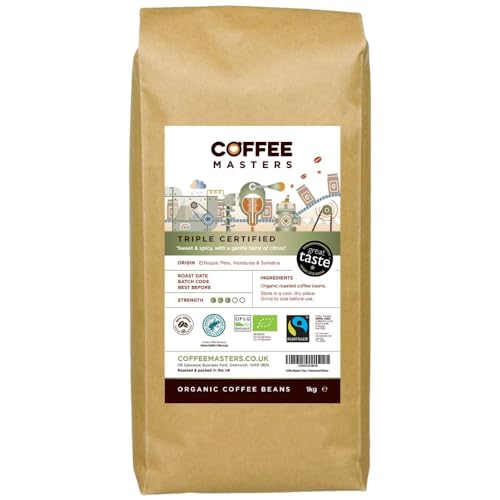10 Mobile Apps That Are The Best For Coffee Beans Types

Coffee Bean Types: Arabica, Robusta, Liberica, and Excelsa
If you're a coffee enthusiast you're likely aware that different beans have distinct flavor profiles. Read on to learn about four of the most popular varieties: Arabica, Robusta, Liberica and Excelsa.
Excelsa beans, a type Liberica is grown exclusively in Southeast Asia. They have a fruitier, more tart flavor and are frequently used in blends of beans to give them added depth.
Arabica
Arabica is the most sought-after coffee in the world and accounts for 75% of global coffee beans produced. Arabica beans are milder and sweeter than Robusta. They also come in different flavour profiles. The taste and aroma components of a cup of coffee can differ widely depending on the growing conditions and the processing methods used to make it.
The word "coffee" originates from the Arabic word meaning the berry. Coffee beans are actually seeds which grow inside bright red berries. It is believed that the ancient Ethiopian shepherds found that their goats were energized by eating these fruit berries. The cultivation of coffee quickly spread all over the world.
Coffee beans can flourish at high altitudes and thrive in cold temperatures and lots of rain. This is why Arabica coffee is considered to be the most delicious kind of coffee.
Many specialty coffee shops and roasters focus on the ethical sourcing of arabica beans, and focusing on fair wages for farmers and sustainable farming practices. These companies often blend arabica beans to make unique signature coffees that can be used in a wide range of brewing methods. Blending gives you control over the flavour, aroma and body of the coffee. It is often preferred in order to create a consistent and balanced taste that appeals to a wider market.
Robusta
Robusta beans are the second most popular type of coffee bean in the world. They have more caffeine per bean and are more protected against diseases and pests. They also contain more chlorogenic acids, which are naturally occurring antioxidants. However, these acids could cause oxidation during the process of brewing coffee and can cause undesirable flavors.
specialty coffee beans is more durable than arabica, able grow in less favorable climate conditions and at lower elevations. It can withstand temperatures that are higher and does well in direct sun. It produces more coffee per plant and is growing faster than arabica. This makes it a more economically viable crop to cultivate.
Although it might sound odd however, arabica and robusta beans are often blended to make coffee blends. If you see the names of countries like Uganda or Kenya listed on a bag of coffee and you can be sure that there's some robusta in there too.
Most roasters employ a mixture of arabica and coffee beans to reduce costs while maintaining quality. To ensure the integrity of the flavor, it's essential to select a top-quality beans from a source you are confident in. The best way to achieve this is to buy your beans directly from the farmer.
Liberica
Liberica beans are more or less football-shaped and are therefore distinct from other coffee bean types. They have a distinctive scent that is fruity and floral with smokey undertones. They are often blended with other coffee bean varieties to provide an extra, stronger flavor.
Liberica coffee beans are grown in West Africa and Malaysia (Borneo) as and in Southeast Asia. They can grow in low altitudes and tolerate hot, humid climates. They also have a more resistant to diseases than Arabica and Robusta.
These characteristics make them ideal for home cultivation. You can find the seeds on the internet from several sources, but it's best to buy locally-owned producers to ensure the quality of the beans. The ideal conditions for growing Liberica coffee plants are fertile, deep volcanic soils with moderately acidic pH, and adequate annual rainfall.
Excelsa is a different kind of coffee bean. It was once classified as a distinct species, but has since been classified as a Liberica variant. These coffee beans are ovals that grow on 20-30 foot coffee plants at moderate altitudes. They have a distinct flavor that is both tart and fruity and makes them a popular option in blends made by home. They have a more subtle flavor and lower caffeine content that is lower than Arabica or Robusta but they still possess a distinct depth of flavor.
Excelsa
Although they're the fourth most sought-after type of coffee beans Excelsa beans aren't as easy to find as Arabica or Robusta. They were considered to be an entirely different species of coffee until 2006, when they were reclassified to be a synonym for Coffea Liberica var. dewevrei. They are grown in Southeast Asia today and account for 7% of the world's production of coffee. The coffee beans have a distinctive teardrop shape, and an eerie, dark taste. They are frequently used to give blends extra body and a sweet tart flavor of ripe fruit.

Arabica beans are the most well-known and are known for their sweeter taste. They thrive at high altitudes, and they thrive in warm tropical climates. They also have a hint of acidity. If they are brewed correctly and roast properly, they can have notes like nuts, chocolate or even fruit.
Robusta is a close second to Arabica and makes up about 40 percent of the world's coffee. Robusta beans are rounder and smaller, but they have more caffeine than Arabica. They also have more bitterness than the other two varieties, and tend to have earthy and woody undertones.
After you've learned about the four most popular varieties you can now pick your favorite drink. If you want a smooth, delicate flavor, opt for an arabica bean or a blend of arabica and robusta beans.
